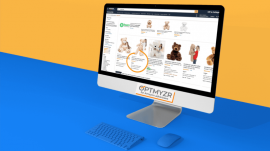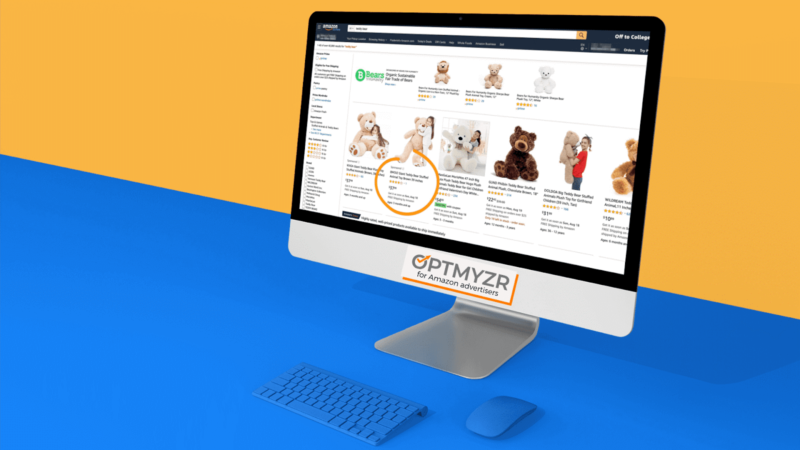The 4 optimization techniques from Google you can use with Amazon Ads today


PPC rockstars have virtually perfected the craft
of serving up conversion-friendly search ads against intent-heavy web searches.
In the last few years, in particular, AI and machine learning have fueled
extraordinary advancements in PPC by enabling unprecedented targeting and the
improved performance that results when ads are shown to the right
audience.
Everyone working in the industry has learned a lot from working with Google Ads along with related channels, like Microsoft Advertising and Facebook, whether they’ve been doing PPC 2 years or 2 decades.
In fact, we’ve all learned so much in those powerful channels, PPC pros are more than ready than they may think to take on the conversion wonderland of Amazon Ads. The similarities of how to manage traditional PPC and Amazon PPC are so plentiful, and Amazon’s ad platform is growing so quickly, that PPC professionals would be remiss not to extend their PPC services to Amazon Ads.
Of course, there are skills and nuances specific to Amazon, but overall, the management techniques that elevated great PPC marketers in Google Ads also work in the Amazon advertising system. People search in much the same fashion on Amazon as they do on Google and Bing. They may start broad with searches such as “women’s dress shoes,” but they’ll also get highly specific such as “[brand] [model] women’s shoe size 7 ½ turquoise.”
Like the big search engines, Amazon is a
phenomenal platform to guide a customer on their journey to a conversion. It is
perhaps the most powerful tool to do so from a consumer goods standpoint.
The four optimizations you can’t miss doing on Amazon
Here are four specific PPC techniques that will help you master Amazon Ads, and chances are you’ll be very familiar with these concepts from your time managing Google and Microsoft ads:
These concepts are nothing new but how you
implement them on Amazon is a bit different from Google Ads. In fact, Amazon’s
system is probably more similar to the earlier versions of AdWords where
management was tedious because the data needed to make good decisions was in a
different part of the tool (reports) than where it could be used for
optimization (campaign management).
But with a solid PPC tool like the award-winning Optmyzr suite, those inefficiencies are quickly resolved and PPC pros can do account optimizations in record time and move on to more strategic work.
What’s the difference between Google’s ROAS and Amazon’s ACOS
Google advertisers can target profitability by
setting the right target ROAS (return on ad spend) based on margins.
Remember ROAS is defined as:
value of sales from ads/cost of those ads
Amazon has a slightly different approach to how
they use these same metrics. They define ACOS (advertising cost of sales) as
follows:
cost of ads/value of sales from those ads
So ACOS is the inverse of ROAS. So if you know how to use ROAS to buy profitable clicks on Google Ads, you know how to do the same on Amazon.
Managing Amazon alongside Google, Bing, and others
Amazon has already claimed its place in the upper echelon of search and e-commerce platforms, now ranking as the third-largest in share of net digital advertising revenue in the U.S.
Forward-looking PPC pros see Amazon as the next great field of opportunity, which is why Optmyzr has introduced Amazon Ads Management as part of our PPC Management Suite. We now make it possible to run core aspects of Amazon Ads directly from the same platform used to run and optimize ads in Google and Bing.
The key is Optmyzr Rule Engine. Using Rule
Engine, PPC pros can manage things like bids and keywords for Amazon
Advertising campaigns and readily toggle ads on and off based on ever-changing
promotions, competitive pressure, and campaign performance.
How to automate Amazon bid management without ceding control
As noted in the 4-point task list above, it’s essential to manage bids for optimal visibility in Amazon. Amazon even provides the necessary guidance, so it’s a simple matter of constantly adapting bids to Amazon’s suggested bid range. Optmyzr Rule Engine includes a pre-built recipe specifically to set bids to the correct range.
 Optmyzr’s Rule Engine for Amazon Ads shows a preview of new bid changes based on Amazon’s suggested bid range. Advertisers can preview suggested changes and automate the optimization once they are satisfied their custom rule is making the intended changes.
Optmyzr’s Rule Engine for Amazon Ads shows a preview of new bid changes based on Amazon’s suggested bid range. Advertisers can preview suggested changes and automate the optimization once they are satisfied their custom rule is making the intended changes.
The recipe can easily be customized to take into account many business factors, like different product lines, different profitability margins, and historical data. Rule Engine empowers the PPC pro to ensure he or she is not skimping on bids and missing out on critical above-the-fold visibility — at the same time providing confidence the PPC pro isn’t wasting spend just for the placement. Manually managing bids in this fashion, directly in Amazon, is too time-consuming and, as a result, prone to being skipped periodically.
Leveraging a tool like Optmyzr that offers the best of automation with customization enables advertisers to stay a step ahead of their competitors, thereby driving more sales at the right cost.
Also recall the crucial goal of maintaining
profitability through ACOS. Again, Rule Engine provides pre-built recipes that
essentially provide one-click bid management to hit that target ACOS. The Rule
Engine can constantly monitor changes in conversion rate and average order
value, and use this dynamic set of metrics to adjust bids based on the
advertiser’s business goals related to profit targets and revenue.
The Rule Engine works with all Amazon ads metrics and entities, including campaigns, ad groups, keywords, product ads, ASINs and search terms. It can add positive and negative keywords, set bids, pause or enable, and generate reports and alerts. With this broad range of capabilities, it is the foundation for virtually any optimization.
 The Rule Engine from Optmyzr lets advertisers write custom if-then logic for their Amazon Advertising account. In this example, negative keywords are created when search terms prove to be too expensive relative to other search terms in the same campaign, or too expensive compared to a specific maximum value.
The Rule Engine from Optmyzr lets advertisers write custom if-then logic for their Amazon Advertising account. In this example, negative keywords are created when search terms prove to be too expensive relative to other search terms in the same campaign, or too expensive compared to a specific maximum value.
Tools free up your time to focus on bigger wins
Imitation is, of course, the ultimate form of flattery. Much like Microsoft Advertising and Facebook, Amazon has intelligently taken cues from the evolution from AdWords to Google Ads to understand the human behaviors and effects of powerful search marketing on conversion. At the same time, each platform has had to develop and evolve on its own to experiment and differentiate in the marketplace.
Each platform has also been on a years-long bender of AI-infused advancements, tapping the power of data and machine learning to predict, make decisions, and automate core functionality. On the surface, it may seem as though PPC pros could become irrelevant — automated into oblivion.
Interestingly, the exact opposite is becoming manifest in PPC’s new world order. PPC rockstars see the opportunity and need to become the conductor of grander, higher-level marketing strategies. Platforms such as Optmyzr allow the PPC pro greater flexibility and visibility across search platforms. Easier creation of campaigns across platforms, repeatable processes, greater visibility, and the ability to connect the dots of each channel’s unique strengths and opportunities.
Machines today are amazing. Humans are extraordinary. Machines PLUS humans make for an unprecedented opportunity for bold marketers to stake a higher-value, more relevant role in the overall marketing mix.
We take what we learn in one channel and apply to others. Now you can do the same from a singular platform in the Optmyzr PPC Management System.
The post The 4 optimization techniques from Google you can use with Amazon Ads today appeared first on Marketing Land.
From our sponsors: The 4 optimization techniques from Google you can use with Amazon Ads today



